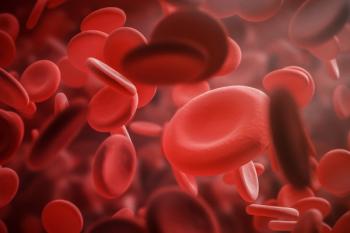
VTE standards get first public test
The list of major hospital killers is due for a shake-up. Proposed performance measures from the National Quality Forum (NQF) and the Joint Commission on Accreditation of Healthcare Organizations could drop venous thromboembolism (VTE) from the No. 1 cause of hospital-related mortality to well down the list.
The list of major hospital killers is due for a shake-up. Proposed performance measures from the National Quality Forum (NQF) and the Joint Commission on Accreditation of Healthcare Organizations could drop venous thromboembolism (VTE) from the No. 1 cause of hospital-related mortality to well down the list.
NQF estimates that VTE currently affects two million patients annually and kills 200,000. The reason: Only 30% to 40% of inpatients receive appropriate assessment, prophylaxis, and treatment.
"We are just starting to recognize the degree of morbidity and mortality associated with this disease," explained Edith Nutescu, Pharm.D., director of the antithrombosis clinic at the University of Illinois Chicago College of Pharmacy and a member of NQF's VTE steering committee. "If JCAHO makes these performance measures into a survey standard, we will have a major impact."
JCAHO has not committed to creating survey standards around VTE, but the organization is clearly moving in that direction. NQF created a steering committee to direct the project and subcontracted design and testing of the actual performance measure to JCAHO. Candidate measures for the National Consensus Standards for Prevention and Care of Venous Thromboembolism are at
The two groups are following parallel tracks, explained JCAHO project director Sharon Sprenger. JCAHO posted candidate measures for a month of public comment early this year. It may modify the initial measures based on comments, then put them through alpha testing with a limited number of hospitals starting in June, she noted.
Pilot testing with a larger group of volunteer institutions is slated for January 2007, with a final review later that year. At the same time, NQF will submit the measures to its own consensus review process. If all goes as planned, hospitals will see a final set of NQF consensus measures in early 2008 backed by new JCAHO survey standards to encourage compliance.
"All of these recommendations are based on level one randomized trials," said Nutescu. "There are no gray areas, so we should not be seeing any major changes. Now we have national guidelines on what should occur in VTE treatment. Until now, it was voluntary and often didn't happen."
The change to more effective treatment of VTE won't be easy for every institution. The first four measures call for VTE risk assessment for all patients as well as universal prophylaxis within 24 hours of admission to hospitals and intensive care units. These measures alone could reduce VTE by 75% to 80%, the measures note.
"People are going to have to work to meet these measures," LaCivita said. "It is the correct thing to do, but there may be tension about the costs involved. Like other practice measures, say getting antibiotics to every pneumonia patient within four hours of admission, you have to work to reach the targets and will reap substantial benefits when you do."
LaCivita also predicted problems with measure 12, calling for dose reductions in patients with impaired creatinine clearance. "Most pharmacists would know that, because we are generally attuned to renal dosing. But other healthcare professionals may not be as aware of the finer points," she said. "This could be a good opportunity to intervene and educate other members of the care team."
A fourth problem area is measure 13, calling for long-term use of low molecular weight heparin to prevent recurrent VTE in cancer patients. Nutescu noted that many cancer patients now use oral coumadin to prevent recurrence of VTE because of cost concerns.
Newsletter
Pharmacy practice is always changing. Stay ahead of the curve with the Drug Topics newsletter and get the latest drug information, industry trends, and patient care tips.





























































































































